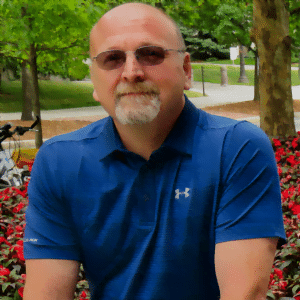Conspirituality: How New Age Conspiracy Theories Became a Health Threat explores the point where New Age spiritualism collides with a deep well of skepticism about power in contemporary America. Throughout their detailed and engagingly written book, authors Derek Beres, Matthew Remski, and Julian Walker illustrate a process that plays out among millions of people and touches health, politics, and culture to a degree that most of us underestimate.
The authors explain the origin story of the term and define it early on. “Conspirituality” first appeared in a 2011 Journal of Contemporary Religion article by Charlotte Ward and David Voas. It is a combination of two assumptions that: “1) a secret group covertly controls, or is trying to control, the political and social order, and 2) humanity is undergoing a ‘paradigm shift’ in consciousness.” (19) These are powerful concepts that resonate in a badly fractured country seeking answers to a long list of personal and collective problems.
Conspirituality appeals to people who sincerely want healthier bodies and peace of mind. Advocates constantly talk about “cleansing,” an undertaking that purges them of modern-day toxins and grants personal agency in a world where individuals are overwhelmed by complex technology and increasingly centralized institutions. (80-94) The trend reflects a moment in time that places a higher priority on “individual well-being (or smugness) as opposed to the common good.” (40) For true believers, altruism and narcissism can walk hand in hand.
Whether they focus on spiritual or physical well-being, or combinations of both, most Conspirituality movements rely on the concept of interconnectedness, an approach that emphasizes the holistic combination of mind and body. As the authors note: “They grasp the enormity of the human challenge, and they respond to it and equally vast hope.” (52) There is a concurrent sense, however, that a threat without boundaries constantly endangers this hope. Within this ying and yang of utopia and dystopia, citing political scientist Michael Barkun, nothing happens by accident. (27-29) This belief transforms the true believer into a crusader, fighting the good fight against perceived omnipotent power.
This “intoxicating socioreligious movement” is also a marketing platform that is ripe for abuse. (26) In too many cases, Conspirituality is the cynical gentrification of non-western philosophy and practice for the sake of an “exploding, unregulated marketplace.” (127) There is a multibillion dollar industry attached to alternate faith and skepticism in traditional medicine. It peddles supplements and essential oils, along with training, consulting, life coaching, and “yoga vacations” among many other products. (124)
Beres, Remski, and Walker add an impressive amount of depth to an already well-covered topic, taking the reader into corners of American culture absent from regular scrutiny. The growth and spread of Conspirituality is not simply the result of easily duped consumers, low information voters, or an online audience “of agitated folks overusing phrases that ping-pong between ominous and ecstatic.” (1) The real strength of the book is its in-depth examination of the infrastructure of online discourse and how New Age influencers interact with their audiences.
Some of the most effective versions of Conspirituality are very adept at repurposing indigenous tradition to counterbalance what is portrayed as the failure of modern society. It is something that both romanticizes and bastardizes the actual beliefs they are mimicking. Jacob Chansley, the now infamous “QAnon Shaman” follows nothing resembling actual shamanism. (36) His reaction to being pardoned by President Trump, recently posted on X that: “NOW I AM GONNA BUY SOME MOTHA FU*KIN GUNS!!! I LOVE THIS COUNTRY!!! GOD BLESS AMERICA!!!!” speaks volumes.
Some of this cultural borrowing reflects a basic ignorance of history. The natural health practices of homeopathy, for example, are often attributed to India but actually originated in 18th century Germany. (120) In other cases, proposals about race and spiritualism are simply old eugenics theory embroidered with a mishmash of aspirational philosophy and pseudoscience. (83) Recent history is both damning and more than a little ironic. According to 2021 CDC data, in the midst of the COVID pandemic, Native Americans had the highest vaccination rates of any demographic in the United States. (170)
Many of the techniques wielded by New Age influencers are also particularly modern. Some of the most successful, like Teal Swan, are internet artists. “Via designer clothes, oversaturated lighting, and dramatic makeup, her image leaps out of the screen like the cover of a fantasy novel.” Although Swan has no professional training or credentials, her 1.4 million Instagram followers can glean advice on trauma recovery through online courses ($200 each) or a weeklong retreat in Costa Rica for $5,000. (109-110) In contrast, academics, medical professionals, and civil servants are bound by practices like peer review and a responsibility to the public good. There are rare exceptions, but in the glossy world of alternate reality internet perception, glossy production values and glibness win. Too many responsible actors lose the battle before it even starts.
More than a few Conspirituality groups reward members through the “application of game-design elements that juice up previously nongaming activities.” (156) In 2020, Wired magazine covered the characteristics of QAnon that overlapped with common features of alternate-reality games (ARG’s). Both are “clue-cracking, multiplatform scavenger hunts” that make participants integral to the story. More importantly, this platform allows the best players to level up and gain both accolades from their peer conspiritualists and authority by virtue of their accomplishments.
READ: New Book Offers Insights Into Why the United States Is a Country ‘Marinated in Conspiracy Theory’
Midway through the book, the authors raise a critical point: What motivates the influencers inhabiting the constellation of Conspirituality platforms? To that question, Derek Beres offers this advice: “Watch what they say, and then watch what they sell.” (152) At points, some individuals, like David Icke and Jordan Peterson combine both qualities, earning substantial fees for public speaking appearances. Others, like Teal Swan, sell personal access in concert with a catalogue of products. Joe Rogan is an interesting entrepreneur, not hewing to any particular belief, but with a podcast that “functions like a Walmart Supercenter that opens up on the access road to a midsize town.” (155) In reality, the “town” is much larger than New York City, Los Angeles, and Chicago combined. Rogan enjoys 19.2 million subscribers on YouTube alone.
It is fair to say that we will never know the breadth or depth of sincerity within the Conspirituality community. However, we do have a grasp of its tragic consequences, something the COVID pandemic drove home. In 2020, medical information “landed on cultural wounds that crossed political boundaries.” (7) Reflecting on the constant, rolling backlash against conventional medicine, the authors note: “It’s a tragic polarization in a world in which the reality is that vaccination only works to the extent that we nurture a common trust, and recognize our interdependence as clearly as any religious devotee.” (98)
The cost of that broken common trust has been enormous and avoidable. Consider the fact that the United States makes up approximately 4.1% of the world’s population, but accounted for 13.2% of total COVID cases and 14.2% of COVID deaths, according to the World Health Organization.
More consequences are waiting. Conspirituality devotes a chapter to Robert F. Kennedy Jr., a former environmental lawyer and anti-vaccination promoter. (223-230) For his individual efforts and those of his Children’s Health Defense non-profit, Kennedy was the second most important influencer among the “Disinformation Dozen,” according to the Center for Countering Digital Hate. Kennedy’s potential confirmation as Secretary of the Department of Health and Human Services places his fringe ideas directly at the center of public health policy affecting the entire country. The potential risks seem obvious to even a casual observer.
Post factual America is a place fraught with dangers for people seeking stability in an increasingly uncertain climate. Conspirituality is essential reading for anyone interested in deciphering the complexities of faith and skepticism that dominate much of contemporary American culture and life.







